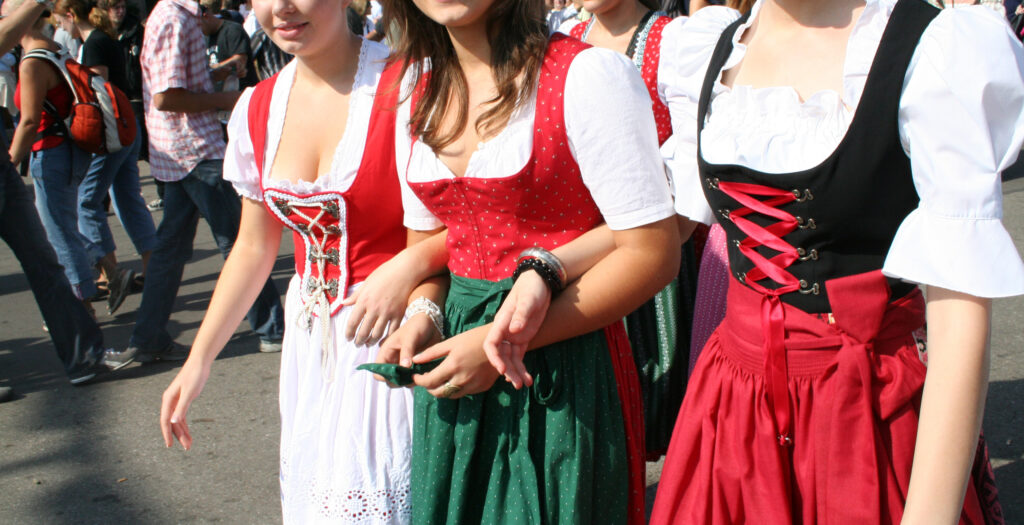German Oktoberfest Dirndl
Discover the captivating history of the dirndl, a traditional dress originating in Germany and Austria. From its humble origins as practical peasant attire to its influence in Bavarian royalty and modern-day fashion, explore the evolution and regional variations of this iconic garment. Uncover the decline and revival of the dirndl, and witness its transformation into a symbol of cultural heritage. Join us on a journey through time as we unravel the rich tapestry of the dirndl’s history.

🌸 The Captivating History of the Dirndl 🌸
The dirndl, a traditional dress that originated in the Alpine regions of Germany and Austria, holds a rich and captivating history. Evoking images of Oktoberfest and folklore festivals, this charming garment has become an iconic symbol of Bavarian culture. Let’s delve into the fascinating history of the dirndl and discover its roots.
1️⃣ Origins: The origins of the dirndl can be traced back to the 18th century. Initially, it was worn as a simple, practical outfit by the rural population in the Alps. It consisted of a bodice, blouse, skirt, and apron. The design was well-suited for the demanding lifestyles of peasants and offered flexibility and durability.
2️⃣ Influence of the Bavarian Court: The dirndl gained prominence in the early 19th century when Bavarian royalty, particularly Princess Therese of Bavaria, popularized it. The Bavarian court often adopted the clothing styles of the rural population, and Princess Therese’s fondness for the dirndl set a trend that spread throughout the region.
3️⃣ Regional Variations: Over time, the dirndl evolved to incorporate regional variations. Different colors, patterns, and embellishments emerged, reflecting the cultural diversity within Germany and Austria. Each region had its unique style, allowing individuals to express their heritage through their attire.
4️⃣ Changes in Fashion: During the late 19th and early 20th centuries, the dirndl experienced changes influenced by changing fashion trends. The length of the skirt varied, sleeves became more elaborate, and accessories such as aprons and shawls became integral parts of the ensemble. Despite these alterations, the essence of the dirndl’s design remained intact.
5️⃣ Decline and Revival: In the mid-20th century, as urbanization increased, traditional clothing fell out of favor, and the dirndl’s popularity waned. It was considered old-fashioned and associated primarily with rural communities. However, in the 1970s, a revival of interest in traditional culture sparked a resurgence of the dirndl’s popularity. Today, it is not only worn during traditional festivals but has also found its place in modern fashion.
6️⃣ Modern Interpretations: Contemporary dirndls have undergone further modifications to suit modern tastes. Designers have experimented with various fabrics, patterns, and cuts, creating a fusion of tradition and modernity. Dirndls are now available in a wide range of styles, from classic and elegant to playful and trendy, making them appealing to people of all ages and backgrounds.
The dirndl’s enduring appeal lies in its ability to bridge the gap between the past and the present, serving as a tangible link to cultural heritage. Whether worn at festivals, weddings, or simply as a fashion statement, the dirndl continues to captivate people’s imagination and celebrate the charm and diversity of the Alpine region.
🌺🍻 Prost to the fascinating history of the dirndl! 🍻🌺

